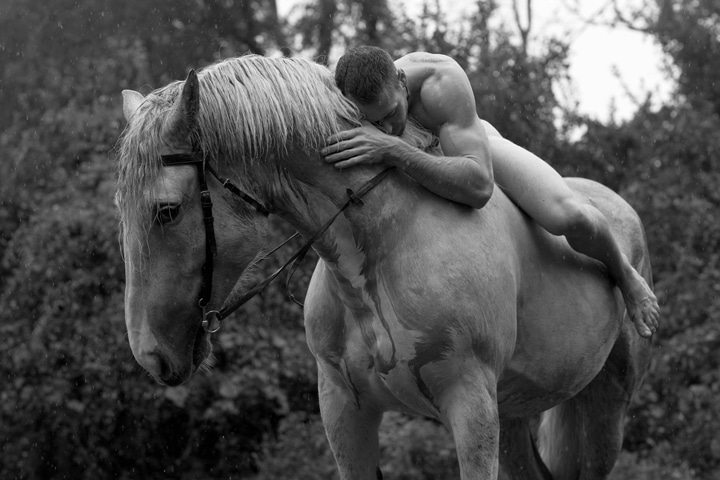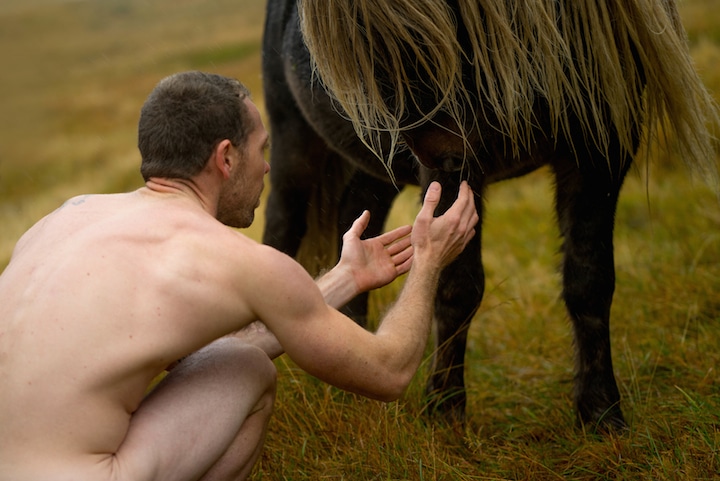Through his personal and professional life, one thing has remained constant for artist Nick Turner—his connection with horses. The American artist has led an eclectic life, which brought him to pass his adolescence in France before returning Stateside to study art.
As an artist who cuts across mediums—his work includes photography, drawing, and painting—a through line is his incorporation of nature and fascination with the equestrian world. Recently, he traveled to Iceland—a country that has long fascinated him—with the arts organization Twyla, in order to work on a powerful new set of self-portraits incorporating horses.


Nick Turner is an American artist and photographer born in Boston in 1983. He was raised in the countryside of Maine where he was home-schooled until the age of fifteen, when he moved to the South of France. There, he attended a French high school before moving to Toulouse, where he passed his international baccalaureate. Immediately after receiving his diploma, Turner moved to Paris. He relocated to New York City to attend the Parsons School of Design, where he received a bachelor’s degree in Illustration.

Is this the dream life? Meet the man who takes photos of himself running naked with horses in Iceland, Nick Turner.
For Turner, the Icelandic countryside is his studio, and horses are his muse. The form of the horse features strongly in Nick’s paintings, drawings and photography.Speaking with Twyla about the animal, he said: “From a young age I have felt an understanding and calmness around them. They seem to carry some of the most pure and sensitive emotions of any animal.”
Explaining further about the project, Turner speaks candidly about how it may easily be misconstrued. “This is not to be confused with a project about vanity, but more about trying to understand my own personal insecurities and where I am most comfortable.”
“I always related more to horses,” he continues. “I’m much more comfortable around them than with people.”
The series is quite shocking at first glance – it’s beastly and completely stripped of any self-consciousness – but is also raw and starkly beautiful.











/business-people-working-in-office-606354629-58b7638e5f9b58808061b0f5.jpg)

/157738333-56a4f0483df78cf772856b63.jpg)

/group-of-business-people-working-on-computer-96747571-58723a8f3df78c17b6dc4b5e.jpg)
/business-people-smiling-in-office-592016671-58b735623df78c060e08c9df.jpg)











